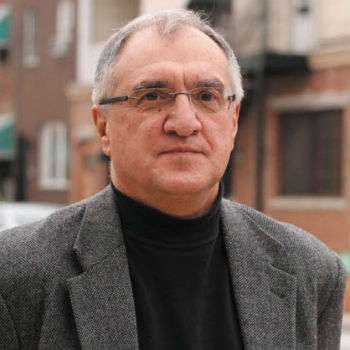
The First Mob Hit in America?
It might have been one of the first mob hits in American history…
And the repercussions are still being felt today.
It happened over 100 years ago.
On October 16, 1890, the sheriff of New Orleans, David Hennessy, was gunned down as he walked home from work. His last words, according to some reports, were “the dagoes got me.”
Those words set the tone for what followed.
There is a memorial plaque and a 26-foot obelisk of a police baton that mark Hennessy’s tomb in Metairie Cemetery in New Orleans. History has been good to him, although his full story would include allegations of corruption and his arrest for murdering a law enforcement rival. That murder, in the final analysis, was ruled self-defense so Hennessy walked away from the criminal complaint.
“The dagoes” weren’t as lucky.
At the time he was killed, Hennessy was investigating Mafia activity along the docks and in other business ventures in his city. There was a large Italian immigrant population. Most of the new arrivals had come from Sicily. New Orleans offered the same kind of climate as home. Fishing and farming were also two sources of income that the Sicilians were familiar with.
While, historically, Chicago and New York have always been described as the epicenters of the nascent Mafia in America, New Orleans was in many ways as important. It was, after all, the breeding ground for Carlos Marcello, perhaps one of the most powerful and historically significant Mafia bosses in American history. There are many who believe John F. Kennedy’s murder was orchestrated by Marcello.
But that’s a story for another day. The point is, New Orleans has always been one of the power centers of the American Mafia. And the story begins with the assassination of David Hennessy, a murder that occurred nearly 20 years before Marcello, as a child, arrived in America.
The murder of Hennessy was front-page news not only in New Orleans but across America. His dying words were used to fan the flames of anti-immigrant bigotry. More than two dozen Sicilian immigrants were rounded up by authorities in the aftermath of the murder. Nineteen were indicted. Some were suspected Mafia members. Others were simply part of the immigrant group that had been targeted.
ICE attacks on immigrants today are in many ways an echo of what was happening back then.
Due process?
There was a trial in March of 1891, a few months after the murder. About a dozen of the suspects were brought into court. The proceedings did not end the way most authorities had hoped. No one was convicted. Many of the defendants were declared not guilty by the jury. For others, the jury hung. It could not reach a decision.
But the defendants were not released. Instead, they were returned to the New Orleans jail while the media and political leaders expressed their outrage over this “miscarriage” of justice.
Something had to be done.
Law and order advocates rallied the populace. The good citizens stormed the jail and pulled 11 of the suspects out into the streets. Several were shot. All were hung. At the time, it was the largest mass lynching in American history.
Their crime? They were Sicilian immigrants.
Most Americans agreed with the sentiments expressed in a New York Times editorial that was written in the wake of the New Orleans murders. The editorial referred to “these sneaking and cowardly Sicilians, the descendants of bandits and assassins, who have transported to this country the lawless passions, the cut-throat practices, and the oath-bound societies of their native country.” It went on to describe Sicilian immigrants as “a pest without mitigations” and opined that “lynch law was the only course open to the people of New Orleans.”
This was the New York Times! Sadly, it accurately reflected America in the 1890s. Sadly, the story keeps repeating itself. It’s the immigrant as “other,” the immigrant as scourge, the immigrant as not worthy to be an American.
But there was more to the New Orleans story. The lynchings created an international hue and cry. At one point, the Italian government was threatening to break off relations with the United States.
Local, state and federal authorities scrambled to do something. New Orleans reluctantly agreed to make payments to the families of those who had been killed. But it wasn’t enough. President Benjamin Harrison came up with an idea.
He would declare a day to honor Italians and Italian Americans. But what to call it? This was in 1892. Historians saw that it was the 400th anniversary of Christopher Columbus’ “discovery” of America.
And so, Columbus Day was born.
School children learned the nursery rhyme – “Columbus sailed the ocean blue in fourteen hundred ninety-two.”
Italian – and Jewish and Irish – immigrants flocked to America at the turn of the last century. But America as a “melting pot” was in many ways a myth, one offered to create a sanitized image of what life was really like for new arrivals. By the late 1930s, Italians and other ethnics who had arrived at the turn of the century began to assimilate. Politics (Fiorella LaGuardia), entertainment (Frank Sinatra) and sports (Joe DiMaggio) provided cultural touchstones, demonstrations that Italians had arrived.
But had they really?
This from a Life magazine profile of DiMaggio (whose picture was on the cover) in 1939: “Although he learned Italian first, Joe, now 24, speaks English without an accent, and is otherwise well adapted to most U.S. mores. Instead of olive oil or smelly bear grease, he keeps his hair slick with water. He never reeks of garlic and prefers chicken chow mein to spaghetti.”
The article was considered a positive portrayal of an emerging baseball star, the son of an immigrant who had made it in America, who had taken America’s pastime by storm…and who didn’t reek of garlic.
Columbus Day became an official national holiday in the 1940s and remained a day of pride for Italian Americans for decades. It was celebrated on October 12, ironically the same month and just four days earlier than the day David Hennessy was shot in New Orleans…
Today it’s a holiday with a mixed message. There are those who prefer Indigenous People’s Day, a nod to the original Americans who were unceremoniously displaced by all the immigrants – including the white, Anglo-Saxon protestants who came here before the Italians, Jews and the Irish, and who, in many ways, benefitted from a different form of organized crime.
Robber barons helped build the United States of America and there are prestigious universities today – Vanderbilt and Stanford being two examples – that honor their names and their accomplishments.
There are no universities named after Arnold Rothstein or Al Capone or Meyer Lansky or Lucky Luciano. They were part of the next wave of immigrants who came to the United States looking for a better way of life.
Today, there are other ethnic groups looking for the same opportunities and, sadly, facing the same kinds of bigotry.
We can argue and/or discuss the merits of naming a day after Christopher Columbus. There are certainly reasons to challenge the original historic depictions of who he was and what he had accomplished.
But it is just as important for those who decry bigotry and prejudice and genocide while railing against Columbus to acknowledge the origin of the holiday – the brutal and unlawful hanging of 11 Sicilian immigrants whose only crime was that they were Sicilian.

